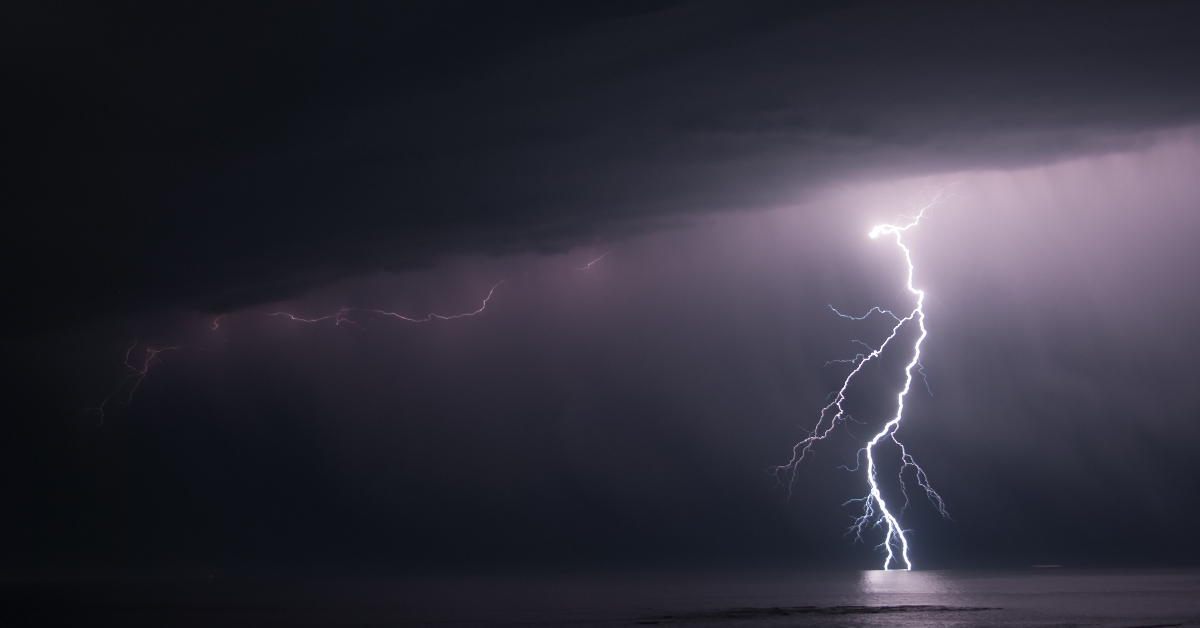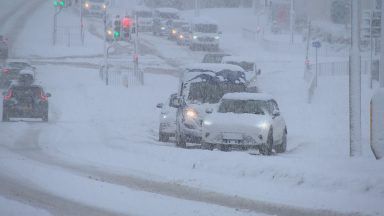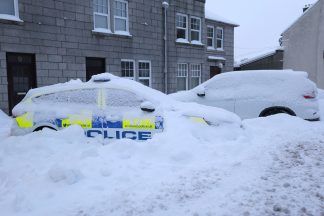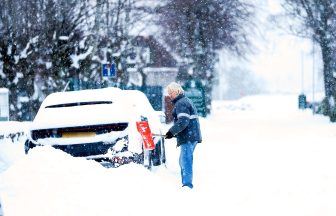Guidance on how to protect yourself in a thunderstorm has been issued by the Met Office amid a yellow weather warning covering much of mainland Scotland.
A yellow thunderstorm warning is in place from 12pm to 9pm on Monday across parts of north, west and central Scotland.
The warning means thunderstorms and rain may bring disruption with flooding, power cuts and difficult driving conditions, the Met Office said.
Forecasters have advised those living in the affected areas to make sure to know what to do in a thunderstorm.
The adverse weather can cause disruption to transport networks and damage property, which in particular, can be the case with large amounts of rainfall.
This can make driving conditions very hazardous. Other hazards include hail, decreased visibility, sudden gusty winds, standing water and of course lightning.
Before the thunderstorm, people are urged to unplug any non-essential appliances if not already using a surge protector.
If you are already out, the Met Office advises to seek shelter if possible, as when you hear thunder you are already within range of where the next ground flash may occur.
Lightning can strike as far as ten miles away from the centre of a storm.
During a thunderstorm, it is warned that telephone lines can conduct electricity. People are urged to avoid using the landline, unless in an emergency
If outside, avoid water and find a low-lying open place that is a safe distance from trees, poles or metal objects.
Activities to avoid during a thunderstorm include golf, rod fishing or boating on a lake.
Amid a storm, be aware of metal objects that can conduct or attract lightning, including golf clubs, golf buggies, fishing rods, umbrellas, motorbikes, bicycles, wheelchairs, mobility scooters, pushchairs, wire fencing and rails.
If you are in a tent, try to stay away from the metal poles.
If you find yourself in an exposed location it may be advisable to squat close to the ground, with hands on knees and with head tucked between them. Try to touch as little of the ground with your body as possible, and do not lie down on the ground.
If you feel your hair stand on end, it is advised to drop to the above position immediately.
After a thunderstorm, people are advised to avoid downed power lines or broken cables.
If someone is struck by lightning, they often suffer severe burns. A strike can also affect the heart, so it is advised to check if they have a pulse.
If you are caught out in thunder and lightning while driving, it is advised that you wind up the windows and stay inside your car.
This is because in the vast majority of cars with a metal roof and frame, the frame will act as a conductive Faraday cage, passing the current around the passengers inside and on to the ground.
Soft-top convertibles, with their fabric roofs, are the most at risk and could catch fire if struck by lightning.
People are urged to be aware that currents can travel through other parts of many modern cars, including GPS and radio systems. Cars with metal interior handles, foot pedals and steering wheels can also carry current.
The Met Office said that cars can be damaged both internally and externally by lightning strikes and thunderstorms can also bring a risk of sudden gusty winds, those most at risk would include cyclists, motorcyclists and high sided vehicles.
The forecasters said to remember to give vulnerable road users including cyclists, motorcyclists and pedestrians more room than usual as they are more likely to be blown around by side winds.
Lowering your speed will lower the distance you travel when buffeted around by the wind.
Hail storms can be extremely dangerous to drive in, reducing your ability to see and be seen, as well as causing damage to your vehicle.
If hail is severe, stop and pull over to a safe place and remain inside the vehicle.
Follow STV News on WhatsApp
Scan the QR code on your mobile device for all the latest news from around the country


 iStock
iStock


























